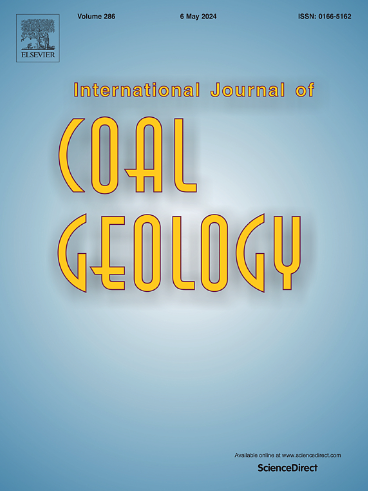Sedimentology and geochemistry of the Upper Permian Longtan and Dalong formations in the Lianyuan Sag, Xiangzhong Depression, South China: Implications for paleoclimate, provenance, tectonic setting, and organic matter accumulation
IF 5.7
2区 工程技术
Q2 ENERGY & FUELS
引用次数: 0
Abstract
The organic-rich shales in the Upper Permian Longtan Formation (LF) and Dalong Formation (DF) are important hydrocarbon source rocks and have become key targets for shale gas exploration in the Yangtze area, South China. To investigate the provenance, tectonic setting, paleoenvironmental conditions, and mechanisms of organic matter (OM) accumulation, this study presents an integrated petrological and geochemical study of a continuously cored well in the Xiangzhong Depression, South China. The LF was deposited in marine–continental transitional facies under a hot and humid climate with intense chemical weathering. OM is predominantly terrigenous-derived, consisting mainly of vitrinite and inertinite. Multiple geochemical proxies, together with pyrite framboid analyses, suggest that oxic, brackish water conditions, low paleoproductivity, and a high influx of terrestrial material prevailed during the deposition of the LF. In contrast, the DF comprises fully marine sediments, reflecting a depositional setting influenced by a rapid sea-level rise and progressive climatic aridification. These changes resulted in a saline, anoxic water column with enhanced primary productivity and reduced weathering intensity. The relationships between total organic carbon (TOC) content and geochemical indicators suggest that paleoclimate and terrigenous influx are the dominant factors controlling the OM accumulation in the LF, whereas upwelling-induced high productivity was the dominant factor driving OM enrichment in the DF. This study provides a comprehensive dataset on the LF and DF, which exhibit markedly different depositional environments, and aims to address the gap in the evaluation of Permian shale gas potential in the Middle Yangtze region.
湘中坳陷涟源凹陷上二叠统龙潭组和大龙组沉积地球化学特征:古气候、物源、构造背景和有机质成藏意义
上二叠统龙潭组和大龙组富有机质页岩是重要的烃源岩,已成为华南扬子地区页岩气勘探的重点目标。为探讨湘中坳陷某连续取心井的物源、构造背景、古环境条件和有机质成藏机制,对该区进行了岩石学和地球化学综合研究。LF沉积于海陆过渡相,气候湿热,化学风化作用强烈。有机质以陆源为主,主要由镜质组和惰质组组成。多种地球化学指标和黄铁矿样分析表明,在LF沉积过程中,缺氧、微咸水条件、低古生产力和大量陆源物质流入。相反,DF完全由海洋沉积物组成,反映了一个受海平面快速上升和渐进气候干旱化影响的沉积环境。这些变化导致了含盐、缺氧的水柱,提高了初级生产力,降低了风化强度。总有机碳(TOC)含量与地球化学指标的关系表明,古气候和陆源流入是控制低地OM富集的主导因素,而上升流诱导的高生产力是驱动东部OM富集的主导因素。为弥补中扬子地区二叠系页岩气潜力评价的空白,建立了具有明显沉积环境差异的中扬子二叠系和中扬子二叠系页岩气综合数据集。
本文章由计算机程序翻译,如有差异,请以英文原文为准。
求助全文
约1分钟内获得全文
求助全文
来源期刊

International Journal of Coal Geology
工程技术-地球科学综合
CiteScore
11.00
自引率
14.30%
发文量
145
审稿时长
38 days
期刊介绍:
The International Journal of Coal Geology deals with fundamental and applied aspects of the geology and petrology of coal, oil/gas source rocks and shale gas resources. The journal aims to advance the exploration, exploitation and utilization of these resources, and to stimulate environmental awareness as well as advancement of engineering for effective resource management.
 求助内容:
求助内容: 应助结果提醒方式:
应助结果提醒方式:


